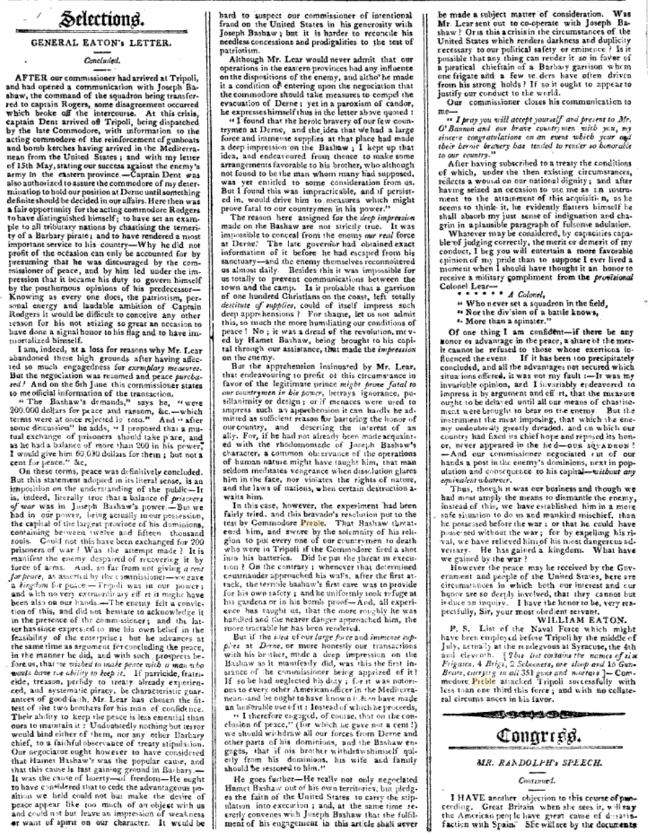We’ll tie a bow on the Tripolitan War and take a look at how key players handled life after peace. This episode also discusses how the American public, and some members of Congress, felt about Lear’s decision for peace. We’ll finish up with some stats and a quick look at how the world started to see United States Marines after this battle.
REFERENCES
A journal, of the captivity and sufferings of John Foss. (n.d.). Christian-Muslim Relations 1500 - 1900. doi: 10.1163/2451-9537_cmrii_com_27678
Allison, R. (2014). The Crescent Obscured The United States and the Muslim World, 1776-1815. Chicago: University of Chicago Press.
Fremont-Barnes, G. (2006). The wars of the Barbary pirates: to the shores of Tripoli: the rise of the Us Navy and Marines. Oxford, UK: Osprey Pub.
Irwin, R. W. (1931). The Diplomatic Relations of the United States with the Barbary Powers, 1776-1816. Chapel Hill, NC: University of North Carolina Press.
Kilmeade, B., & Yaeger, D. (2018). Thomas Jefferson And The Tripoli Pirates: the forgotten war that changed american history. Place of publication not identified: PORTFOLIO PENGUIN.
Lane-Poole, S., & Kelley, J. D. J. (1894). The Barbary corsairs. London: T. Fisher Unwin.
Naval Documents Related to the United States Wars with the Barbary Powers ...: Naval Operations Including Diplomatic Background ... Government Printing Office, 1939.
State Papers and Publick Documents of the United States from the Accession of George Washington to the Presidency: Exhibiting a Complete View of Our Foreign Relations since That Time. T.B. Wait, 1815.


